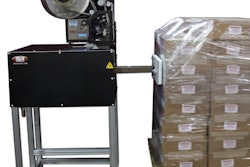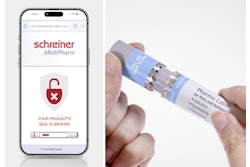
When you think about package design considerations in the life sciences, perhaps you envision a redesigned carton or blister pack for a medication making the switch from prescription-only to an over-the-counter product. Or, maybe you imagine a dazzling new label or intriguing bottle shape for a newfangled nutraceutical beverage. Yet, when Healthcare Packaging conducted an e-mail survey in September with a question about package design, it was the medical device community that was eager to discuss the issue.
The survey "question" read, “The packaging design community considers healthcare packaging to be the 'final frontier' and complains about a reluctance to change. Have you discussed major changes to package design? Is sustainability driving the change, or cost savings, or even new end-user benefits?”
That reluctance to change was evident in a response from one medical device respondent who pointed out, “Change is difficult in any organization, and if the manufacturer doesn't see the customer's view, nothing changes.”
Incorporating change may be difficult, said another medical device manufacturer, considering that “sterile packaged medical devices are expensive to validate—that seems to be the main resistance to change.”
“Sustainability and cost savings go hand in hand,” noted another medical device respondent. A pharmaceutical respondent seconded those thoughts, saying, “Sustainability and cost savings are the two biggest drivers in packaging design, with compliance a close third.”
A medical device manufacturer admitted, “While our current packaging is ancient, we have embarked on making quite significant changes. Sustainability,” he noted, “is not the driver. End-user benefits are driving the changes, as well as the drive to reduce quality risks.”
An especially thoughtful response came from another medical device manufacturer who said, “Sustainability is a huge driving force. In packaging medical devices and pharmaceuticals, we have to be realistic about packaging expectations. Our customers are generally requiring high-barrier materials to meet their need to protect the product from oxygen, moisture, and light. The material in these packages is expected to have a shelf life of five years or greater. With that in mind, this material cannot also be compostable. Where material suppliers can make an impact is in reducing, in terms of downgauging and package content and waste.”
Some respondents talked about the use of specific packaging materials, such as the medical device representative who noted, “We are attempting to be more conscious of sustainability. We now use high-density polyethylene or PETG when designing new trays.”
Another medical device manufacturer pointed out, “We are focused on removing chemicals and plasticizers that are proven harmful to human health. There is a resistance to change due to proven methods of sterility with our materials (shelf-life testing, integrity testing, biocompatibility), so it will be hard to change our medical device packaging designs.”
Several respondents commented about regulatory concerns being a roadblock to potential material changes, but one pharmaceutical representative explained, “In medical device packaging, the end user is starting to have a much louder voice. This has an impact on sustainability, supply chain, and use/dispensing of product. There is much more room in device packaging for advancements than there is in pharma.”
“Sustainability and cost savings are the two biggest drivers for change in packaging,” said one pharmaceutical respondent. “If it is reducing materials or looking at cheaper vendors, it is always because the company is looking to save money and to be more environmentally friendly.”
Another pharmaceutical respondent believed there was little action or investment in sustainable materials, saying, “Sustainability is a buzzword often used, but I don't see the corporate investment in achieving substantial conversion to sustainable manufacturing or packaging.”
An insight from another pharmaceutical respondent: “Our group is attempting to implement a life-cycle approach to our packaging designs. Focus on grabbing market share through package design/use, then shift to volume and security, and at the end of the life cycle, focus on cost savings.”
Based on these survey respondents, clearly financial costs and the desire to market sustainable materials and meet regulatory objectives are critical to package design for pharmaceuticals, medical devices, and personal care/nutraceutical products. But one medical device respondent focused on another “bottom line,” saying, “Patient safety is first and formost.”
-By Jim Butschli, Editor
The survey "question" read, “The packaging design community considers healthcare packaging to be the 'final frontier' and complains about a reluctance to change. Have you discussed major changes to package design? Is sustainability driving the change, or cost savings, or even new end-user benefits?”
That reluctance to change was evident in a response from one medical device respondent who pointed out, “Change is difficult in any organization, and if the manufacturer doesn't see the customer's view, nothing changes.”
Incorporating change may be difficult, said another medical device manufacturer, considering that “sterile packaged medical devices are expensive to validate—that seems to be the main resistance to change.”
“Sustainability and cost savings go hand in hand,” noted another medical device respondent. A pharmaceutical respondent seconded those thoughts, saying, “Sustainability and cost savings are the two biggest drivers in packaging design, with compliance a close third.”
A medical device manufacturer admitted, “While our current packaging is ancient, we have embarked on making quite significant changes. Sustainability,” he noted, “is not the driver. End-user benefits are driving the changes, as well as the drive to reduce quality risks.”
An especially thoughtful response came from another medical device manufacturer who said, “Sustainability is a huge driving force. In packaging medical devices and pharmaceuticals, we have to be realistic about packaging expectations. Our customers are generally requiring high-barrier materials to meet their need to protect the product from oxygen, moisture, and light. The material in these packages is expected to have a shelf life of five years or greater. With that in mind, this material cannot also be compostable. Where material suppliers can make an impact is in reducing, in terms of downgauging and package content and waste.”
Some respondents talked about the use of specific packaging materials, such as the medical device representative who noted, “We are attempting to be more conscious of sustainability. We now use high-density polyethylene or PETG when designing new trays.”
Another medical device manufacturer pointed out, “We are focused on removing chemicals and plasticizers that are proven harmful to human health. There is a resistance to change due to proven methods of sterility with our materials (shelf-life testing, integrity testing, biocompatibility), so it will be hard to change our medical device packaging designs.”
Several respondents commented about regulatory concerns being a roadblock to potential material changes, but one pharmaceutical representative explained, “In medical device packaging, the end user is starting to have a much louder voice. This has an impact on sustainability, supply chain, and use/dispensing of product. There is much more room in device packaging for advancements than there is in pharma.”
“Sustainability and cost savings are the two biggest drivers for change in packaging,” said one pharmaceutical respondent. “If it is reducing materials or looking at cheaper vendors, it is always because the company is looking to save money and to be more environmentally friendly.”
Another pharmaceutical respondent believed there was little action or investment in sustainable materials, saying, “Sustainability is a buzzword often used, but I don't see the corporate investment in achieving substantial conversion to sustainable manufacturing or packaging.”
An insight from another pharmaceutical respondent: “Our group is attempting to implement a life-cycle approach to our packaging designs. Focus on grabbing market share through package design/use, then shift to volume and security, and at the end of the life cycle, focus on cost savings.”
Based on these survey respondents, clearly financial costs and the desire to market sustainable materials and meet regulatory objectives are critical to package design for pharmaceuticals, medical devices, and personal care/nutraceutical products. But one medical device respondent focused on another “bottom line,” saying, “Patient safety is first and formost.”
-By Jim Butschli, Editor





















